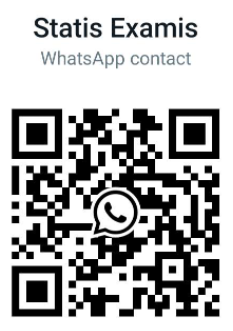Navigation » List of Schools » East Los Angeles College » Physiology » Physiology 001 – Introduction to Human Physiology » Winter 2021 » Lecture Exam 1
Question #1
A muscle cell
B collagen cells
C Paracrine
D epithelial cells
Question #2
A TRUE
B FALSE
Question #3
A A new set of effects unlike those of heroin alone
B A decrease in the effects of heroin
C The same effects from heroin plus additional effects of naloxone
D An increase in the effects of heroin
Question #4
A FALSE
B TRUE
Question #5
A It phosphorylates cell proteins.
B It is the first messenger that binds to the integral membrane protein receptor.
C It splits and activates G-protein subunits.
D Along with diacylglycerol, it activates protein kinase C.
E It binds to the endoplasmic reticulum and causes therelease ofinositol trisphosphate
Question #6
A Sodium
B Thyroid hormone
C Glucose
D Cyclic AMP
E Protein kinase
Question #7
A When the extracellular concentration of a chemical messenger reaches a very high level, it overwhelms transporter molecules and the chemical floods into the cell.
B Only hydrophilic first-messenger molecules can activate second-messenger molecules within the cell cytosol.
C Some cellular receptors have such low affinity for chemical ligands that it can require a million or more molecules to activate them.
D A single first-messenger molecule activates multiple second-messenger molecules, each of which activate thousands of enzymes.
Question #9
A Decreasing the activity of cAMP-dependent protein kinase
B Acting as an agonist on the receptor for epinephrine, a hormone that increases heart contractility
C Increasing the expression of Camp
D Increasing the availability of phosphodiesterase molecules
E Inhibiting phosphodiesterase activity
Question #10
A Cyclic AMP directly activates enzymes that catabolize glycogen and fat.
B Epinephrine is binding to two types of receptors in the plasma membrane.
C The activated receptor complex stimulates production of two different second messengers.
D Cyclic AMP-dependent protein kinase activates two kinds of enzymes.
Question #11
A There are two types of receptors for epinephrine that use the same second-messenger system.
B There are two types of epinephrine receptors with different affinities for epinephrine that use two different second-messenger systems.
C At higher concentrations epinephrine can pass through the plasma membrane and directly stimulate contraction within the cell.
D There is one type of epinephrine receptor that uses two second-messenger systems.
Question #12
A FALSE
B TRUE
Question #13
A TRUE
B FALSE
Question #14
A FALSE
B TRUE
Question #15
A Water
B Lipid molecules
C Charged particles
D Glucose
E Solutes
Question #17
A Substance X will diffuse faster.
B Substance X and Substance Y will diffuse at the same rate, as they are of equal size and concentration.
C Substance Y will diffuse faster.
Question #18
A TRUE
B FALSE
Question #20
A Hypertonic solutions are always hyperosmotic.
B Hypoosmotic solutions are always hypotonic
C The term “tonicity” refers to the effect that a solution has on the degree of stretch or shrinking of the cell membrane.
D The term “osmolarity” refers to the osmotic properties of a solution, regardless of its tonicity.
E Isotonic solutions are always isoosmotic.
Question #21
A FALSE
B TRUE
Question #22
A Opening of aquaporins on the apical membrane
B Active transport of Na + from the lumen to the basolateral side
C Tightening the tight junctions between epithelial cells
D Facilitated diffusion of glucose to the bloodstream from the lumen
E Active transport of H + from the basolateral side to the lumen
Question #23
A have names generally ending in the suffix “-ose.”
B are catalysts in chemical reactions.
C are broken down during chemical reactions they catalyze.
D can be carbohydrate molecules.
E are polymers of ATP that store large amounts of energy.
Question #24
A proteins and glycocalyx.
B water.
C phospholipids and proteins.
D cytosol.
E phospholipids and nucleic acids.
Question #25
A They add phosphate groups to proteins.
B They perform the opposite function as phosphatases.
C They produce effects similar to allosteric modulation.
D They use ATP to carry out their reactions.
E They remove phosphate groups from proteins.
Question #26
A TRUE
B FALSE
Question #27
A When present, it increases the binding of a ligand to its receptor.
B It decreases the amount of ligand required to activate the protein.
C It blocks the binding of the ligand to its binding site and prevents activation of the protein.
D It binds to a different binding site on the protein, altering the protein shape so that a ligand cannot bind.
Question #28
A FALSE
B TRUE
Question #29
A FALSE
B TRUE
Question #30
A 2 molecules of pyruvate, 2 molecules of lactate, and 2 ATP
B 2 molecules of NADH and 2 molecules of water
C 2 molecules of pyruvate, 2 molecules of water, and 2 NADH
D 2 molecules of pyruvate and 36 molecules of ATP
E 2 molecules of ATP, 2 molecules of water, and 2 molecules of lactate
Question #31
A FALSE
B TRUE
Question #32
A All of the molecules will move freely in the lipid bilayer.
B Cholesterol will associate with adjacent phospholipid molecules and stay near them.
C Cholesterol will migrate away from phospholipids and toward proteins.
D Cholesterol will be excluded from the bilayer and will no longer be associated with phospholipids because they have different properties.
Question #33
A Begins with a molecule of acetyl coenzyme A
B Results in molecules with an even number of carbon atoms only
C Requires more energy than is produced by the catabolism of the same fatty acid
D The enzymes that catalyze it are in the same location as those that mediate fatty acid catabolism
E Takes place in the cytosol of cells
Question #34
A FALSE
B TRUE
Question #36
A FALSE
B TRUE
Question #37
A FALSE
B TRUE
Question #38
A Increase blood glucose level
B Decrease blood glucose level
C No effect on blood glucose level
Question #39
A Ionic bonds
B Hydrophobic interactions
C You are likely to find all of these within a single protein.
D Hydrogen bonds
E Disulfide bridges
Question #40
A FALSE
B TRUE
Question #41
A unipolar.
B bipolar.
C amphipathic.
D hydrophobic.
E hydrophilic.
Question #42
A The number of electrons
B The number of neutrons
C The number of bonds it can form
D The number of protons
E The ratio of protons to electrons
Question #43
A Hydrogen bonds
B Covalent bonds between purine and pyrimidine bases
C Covalent bonds between two cysteine amino acids
D Ionic bonds
E Van der Waals forces
Question #45
A TRUE
B FALSE
Question #46
A They cease to occur when a person is in a dark environment.
B They cease to occur when a person is in a dark environment.
C They repeat approximately every 24 hours, like daily spikes in hormone secretion.
D They are cyclical, like the 28-day female menstrual cycle.
E They are voluntary rhythms, like the time you decide to eat lunch each day.
Question #47
A FALSE
B TRUE
Question #48
A As age increases, the amount of calcium in bones tends to decrease.
B Increasing the size of fast-food restaurant portions causes body weight to increase.
C After going outside on a hot day, the core body temperature increases.
D A person who becomes very nervous begins to sweat profusely.
E After eating a large batch of salty popcorn, levels of salt in the urine increase.
Question #50
A Positive feedback
B Feedforward regulation
C Developmental acclimatization
D Physiological acclimatization
E Evolution
Question #51
A FALSE
B TRUE
Question #52
A Receptor, afferent pathway, integrating center, efferent pathway, effector
B Integrating center, receptor, afferent pathway, efferent pathway, effector
C Receptor, efferent pathway, integrating center, afferent pathway, effector
D Effector, afferent pathway, integrating center, efferent pathway, receptor
E Effector, efferent pathway, integrating center, afferent pathway, receptor




